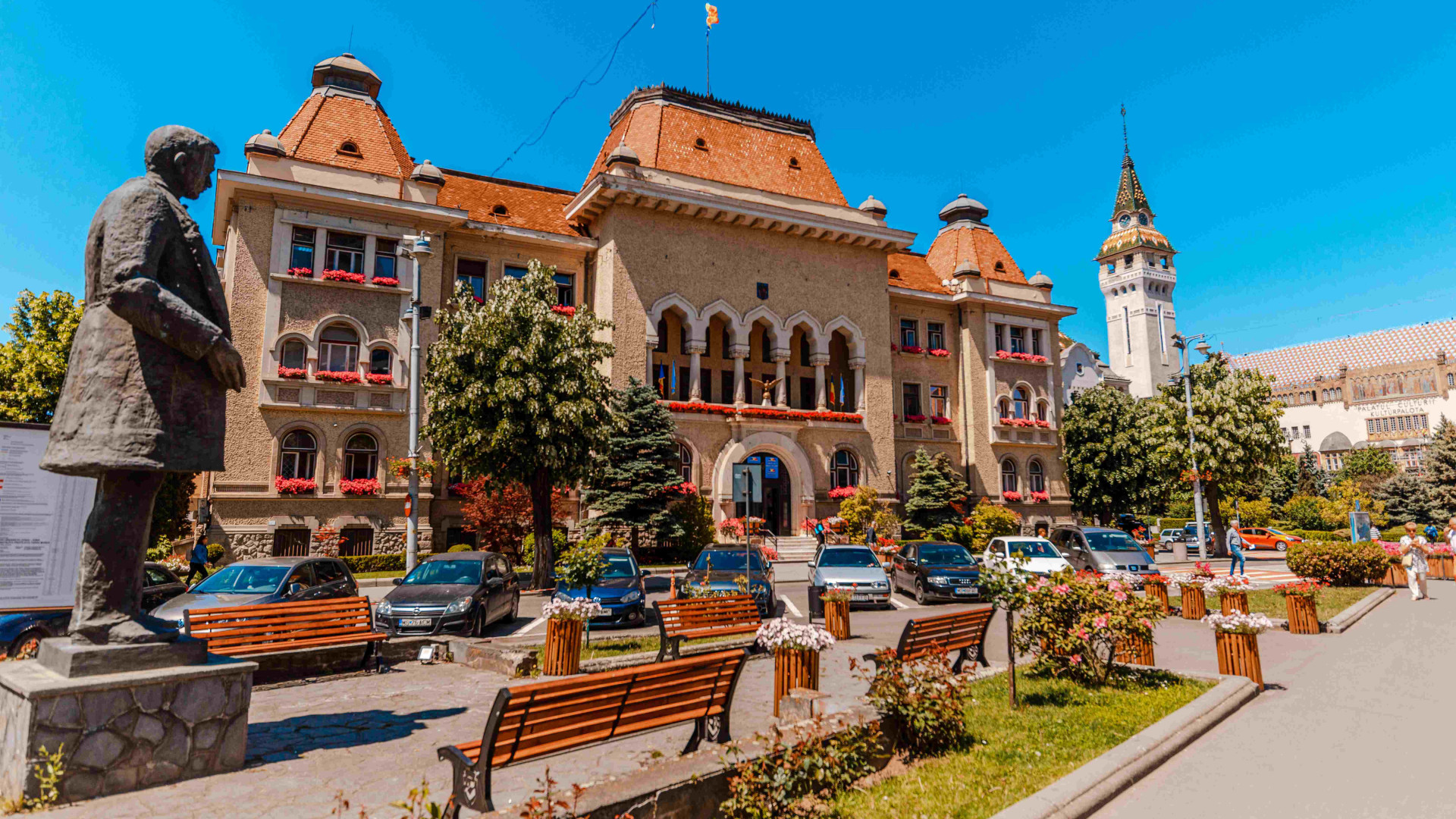Castles, Citadels, Architectural Curiosities
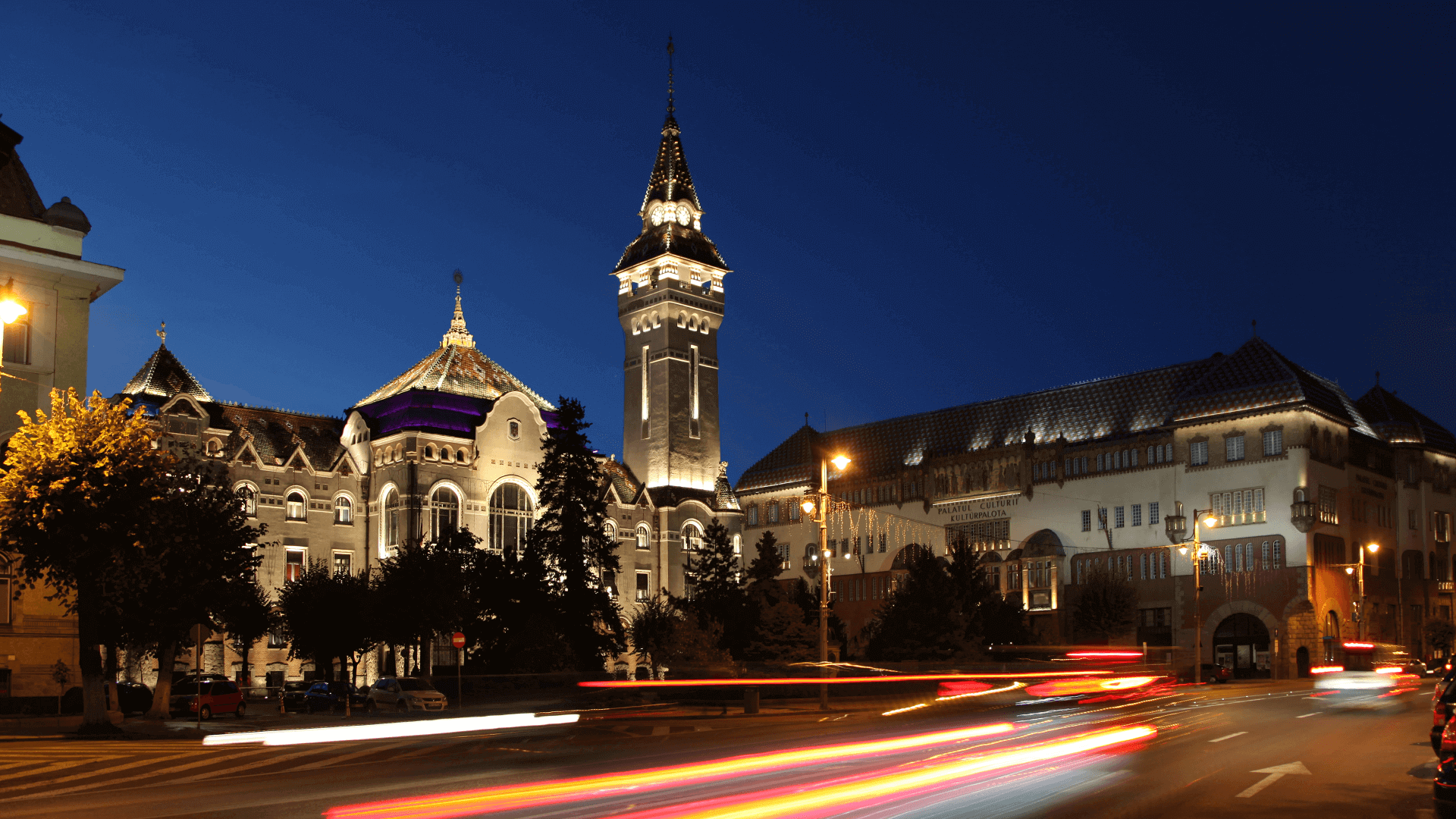
Administrative Palace - Târgu Mureș
At the beginning of the century, when the development of the city center prospered, the administrative building began, the first building built in Art Nouveau style in Târgu Mureş. The project of this impressive building was made by the architects Komor Marcell and Jakab Dezső - great lovers of Transylvania. The elegance of the place is due to pink marble, stained glass, Zsolnay tile, marble pillars. In the basement of the building were designed a few service rooms, cells, firebox, etc. Downstairs were offices such as the police, the court, the tax office, the archives, etc. Upstairs was the town hall, the festive hall, the council room, the marriage hall. The tower where we have the most beautiful view of the city functioned as the residence of the firefighters. The Tower Opening HoursSchedule: (May-August)Tuesday – Friday: 9.00 a.m. – 3.00 p.m.Saturday – Sunday 9.00 a.m. – 2.00 p.mMonday: closed. The tower is closed on Public Holidays. Schedule: (September-April)Tuesday – Friday: 9.00 a.m. – 2.00 p.m.Saturday – Sunday 9.00 a.m. – 1.00 p.mMonday: closed. The tower is closed on Public Holidays.Tickets can be bought at the box office of the Palace of Culture.
Learn more
Cultural Palace - Târgu Mureș
The Palace of Culture in Tîrgu Mureș is part of the Art Nouveau architectural style ensemble in the city center, together with the Administrative Palace, both built at the beginning of the 20th century. The Palace of Culture was the last and most representative work of the architect couple Komor Marcell and Jakab Dezső from Budapest, which they built between 1911 and 1913. The construction of the palace was part of a nation-wide program to strengthen urban values by investing in culture, administration and economy, initiated on the territory of the Austro-Hungarian Empire, during the mandate of Mayor Bernády György.The new building was designed to house the music school, a language school, a library and a museum, and the exterior was supposed to reflect the greatness of Hungarian culture in Transylvania. The especially rich interior and exterior ornaments were made by the most famous artists of the time, being inspired by Hungarian history and prehistory, as well as by folk art. These are represented by bas-reliefs, mosaics, valuable stained glass windows specific to the Secession style, polychrome tiles made at the Zsolnay factory, stone and stucco ornaments, frescoes and gilded paintings, etc. Thus, Tîrgu Mureș coud witness the birth of one of the most specific creations of total art belonging to Hungarian Art Nouveau architecture!The separation and at the same time the connection of the different functions of the new corner building was a real challenge for the architects, but they managed to create a symmetrical masterpiece, with a horizontal structure, displayed on five levels. The heart of the building is the Concert Hall, which reaches a height of three levels. On the ground floor there is a foyer with two naves, on the first floor the Hall of Mirrors, and on the second floor there is the Small Hall. The third floor is entirely taken by the Museum.The FoyerAt the main entrance to the Palace of Culture there is an impressive square shaped foyer, extended symmetrically in both directions, with a huge mirror at each end. The domes of the hall are supported by columns decorated with black granite slabs and wrought brass elements, offering a sense of elegance to the space. The decoration was made in 1913 by Körösfői-Kriesch Aladár, the founder of the Gödöllő Art Colony in Hungary, together with his disciples.The paintings with floral motifs, enriched with a dynamic linear structure, create an oriental atmosphere, enhanced by both the golden glow of the ornaments and the warm light that enters through the yellow stained glass windows above the entrance.The Concert hallThe concert hall’s main entrance opens from the foyer. It has a capacity of 800 seats and it dominates the central part of the building, being vertically extended on all three levels. The program for decorating the hall was designed by the architect couple Komor and Jakab, in accordance with Mayor György Bernády’s requests. Thus, the ornamentation was inspired by Transylvanian folk art, using floral and animal motifs, while the chromatic world of the room is dominated by light purple, in harmony with the deep red of the curtains and the gold, contrasting the black furniture.In the middle of the discreetly shaped dome ceiling there is an imposing Secession-style chandelier, made of lacquered brass and glass beads. The hall was completed with an organ ordered from the Rieger organ factory in Silesia and assembled in 1913, with 4463 tubes and 63 registers.The Hall of Mirrors Probably the most representative room in the Palace of Culture is the Hall of Mirrors, located on the first floor. This impresses first of all, through the 12 stained glass windows of supreme value, made in the workshop of Róth Miksa in 1913. The side compositions were created according to the drawings of Toroczkai Wigand Ede. The stained glass windows on the left represent scenes from everyday Transylvanian life and details from traditional Szekler architecture. The paintings on the right illustrate Szekler legends. But the most spectacular are the four stained glass windows in the middle, representing Hungarian folk ballads with a vibrant chromatic, whose plans were made by Nagy Sándor, one of the representative figures of the artistic colony of Gödöllő.The Small HallLocated on the second floor, above the Hall of Mirrors, the Small Hall was created to host chamber concerts, lectures and literary readings. The ornamental painting of the Small Hall - with a rich and vivid colour palette, red, green and yellow, on a dark background - was made by Falus Elek, the artist in charge of painting the staircases and the Hall of Mirrors.Today, the Palace of Culture is hosting important cultural and artistic institutions, such as the County Library, the History Museum, the Art Museum and the Philharmonic. Inside the palace you can visit the Foyer, the Staircases, the Mirror Hall, the Small Hall and the Great Hall (concert hall), the Hungarian Classical Art Gallery, the Modern Romanian Art Gallery, as well as the commemorative exhibitions dedicated to Mayor Dr. György Bernády and Mayor Dr. Emil Dandea.The Palace of Culture in Târgu Mureș still holds a special place on the international map of the Art Nouveau movement and style, being one of the most beautiful achievements of this style in Transylvania!Opening HoursTuesday - Sunday: 9:00 - 17:00Closed on MondaysThe ticket office closes at 16:30The Museum is closed on Public Holidays.Galleries may occasionally be closed for maintenance or long-term refurbishment.
Learn more
The Medieval Citadel
Built in the 17th century, the present citadel was erected on the site of an older fortification, from 1492, which belonged to Báthori István, the voivode of Transylvania. It was destroyed when the Habsburg troops led by general Georgio Basta entered the town, in 1601. A year later, during the mandate of mayor Borsos Tamás reconstruction works began, in a pentagonal shape, with 7 bastions, 5 of which were built by the strongest guilds in town at that time (the tailors, the coopers, the furriers, the shoemakers and the butchers), being interconnected by 10 meter high walls and surrounded by a 10m wide and 8m deep moat. Today the citadel has been completely renovated and it represents an important attraction for both the locals, and the tourists. Discover the history of the Citadel!We offer free guided tours, from Monday to Friday between 8:00 and 15:00 at the Fortress. Book now for an appointment by calling +40 (787) 709 606.And if you feel like discovering the citadel on your own, you can do it in a fun way, through the interactive tour developed by the FORCAMP Association, where your mobile phone will be your guide. Start the tour by clicking HERE.
Learn more
„Bolyai” building - Târgu Mureș
The cradle of the Reformed College was the former Franciscan monastery building, located near today’s Fortress Church, which had already been abandoned by 1556. The Transylvanian Diet donated the building to serve as a school (Schola Particula). From 1557 onwards, Reformed children were taught reading, writing, and arithmetic here.The origins of this educational institution are closely linked to the Reformation and to European humanism, coinciding roughly with the beginnings of the Principality of Transylvania — a time when new intellectual movements were spreading across Central and Western Europe.In 1602, the school was relocated to St. Nicholas Street, into the buildings belonging to the then St. Nicholas Parish Church. However, these premises soon became too small and had to be expanded several times up to the early 19th century.Between 1716 and 1718, the renowned school offered shelter to 50 students and 2 professors who had fled from the Reformed colleges of Sárospatak and Alba Iulia. On April 30, 1718, the three institutions merged, and the school was elevated to the rank of college, gaining the status of a higher educational institution. It continued to operate as the Reformed College uninterruptedly until 1948.In the spring of 1829, a printing press was established on the premises of the college, where Bolyai Farkas and Bolyai János published their famous works, Tentamen and Appendix, along with many valuable textbooks and literary or scientific publications. In recent years, the School Museum was set up in the rooms of the former printing press, exhibiting among other items the original letterpress set of the Reformed College. The museum is currently closed temporarily due to restoration works.The oldest surviving building of the college is the two-story dormitory built in 1802–1803. During the 19th century, another two-story building was erected between today’s Bolyai Street (formerly Nagyköz) and St. Nicholas Street, with shops on the ground floor and classrooms upstairs. This building was demolished in 1907 as outdated.Between 1907 and 1909, according to the plans of architect Baumgarten Sándor, the new two-story Art Nouveau main building of the school was constructed. Today, the complex houses two Hungarian-language educational institutions: the Bolyai Farkas Theoretical High School and the Reformed College.
Learn more
Teleki Library - Târgu Mureș
In 1802 Count Teleki Sámuel, the Chancellor of Transylvania, opened the first public library in Transylvania. The building was constructed between 1799 – 1802 and the library had the role of bringing people closer to books. It provided approximately 40.000 volumes, gathered over six decades, in which he had collected the first prints of the most representative scientific works, as well as a reading room for in-depth study of the valuable manuscripts. After World War II, this collection was completed with the 80.000 volumes of the former Reformed College, as well as funds from the castles in the region. Today the treasures of Teleki Library can be admired in the original hall, on the ground floor of the building.Opening HoursExhibitions:Tuesday-Friday: 10:00 - 18:00Reading Room:Tuesday-Friday: 10:00 - 18:00Last admission half an hour before closing time!
Learn more
House of Teleki Domokos - Târgu Mureș
The palace located at the foothill of the Citadel was built between 1797 and 1803 in classical Baroque style. Its inner courtyard is bordered by a colonnade with carved Ionic stone columns. The Latin inscription on the decorated gable above the main cornice describes the construction of the building: “This building, not overly boastful, was erected with great care and great expense by Count Domokos Teleki of Sic, Lord Lieutenant of Turda County, and his wife, Zsuzsanna Kendefy of Malomvíz. Not from money obtained through betrayal of the homeland or the plundering of servants, nor from coins taken from the needy or from the embezzlement of funds intended as gifts for the poor, nor from debts that would burden the family. Be assured that these stones preserve this truth. Lajos Teleki, that very gentle man once called ‘Nathan,’ together with Elek Kendefy, the president of the town council and his immaculate councilor, protected the builders of this house, taking into account the piety of the parents and the fact that they involved their children in the work, assisting them effectively. In the Year of our Lord 1803.”Like all high-ranking aristocratic residences, the house hosted musical evenings and performances. At one such event, Farkas Bolyai was present together with his son, János, who, being the youngest member of the orchestra, performed a symphony by Haydn. In 1849, the house served as General Bem’s headquarters, a fact recorded on a Hungarian memorial plaque:“In this house spent the night the great fighter for universal freedom, General JÓZEF BEM, who on the morning of July 30, 1849, together with SÁNDOR PETŐFI, departed from here toward the battlefield of Albești. May their memory be blessed in the hearts of all lovers of freedom. Erected on March 15, 1990 by the youth of Târgu Mureș.”The renowned tavern called “Nagy-pipa” (The Big Pipe) once operated in this building, and later, starting in the 1930s, the workshop of tinsmith Sándor Fülöp, where the metal elements of the Citadel Church tower were created during restoration works. In 1935 the property was purchased by the Reformed Church, and today it houses the Reformed Parish of the Citadel, the office of the Mureș Plain Reformed Diocese, and the church archive. Also in 1990, the Higher School for Teachers and Cantors and the re-established Reformed College were founded here, receiving space in the former, later expanded boarding building of the Bolyai High School. From the wrought-iron balcony located on the central axis of the upper floor, General Bem greeted on July 30, 1849 the troops departing toward Cristuru Secuiesc – Sighișoara.Address: 3 Bernády György Square Source: Árpád Balás. Târgu Mureş personalized. Târgu Mureş: Mentor (2024).
Learn more
Toldalagi Palace (Ethnographic And Folk Art Museum) - Târgu Mureș
Toldalagi Palace is the first noble residence built in the city and one of the most beautiful Baroque buildings in Transylvania. It was built between 1759 – 1772, as the residence of Count Toldalagi László, who was appointed judge at the Tabula Regia (the Supreme Court), following its relocation from Mediaș to Târgu-Mureș, in 1754. Since 1984 the building has housed the Ethnographic and Folk Art section of Mureș County Museum.
Learn more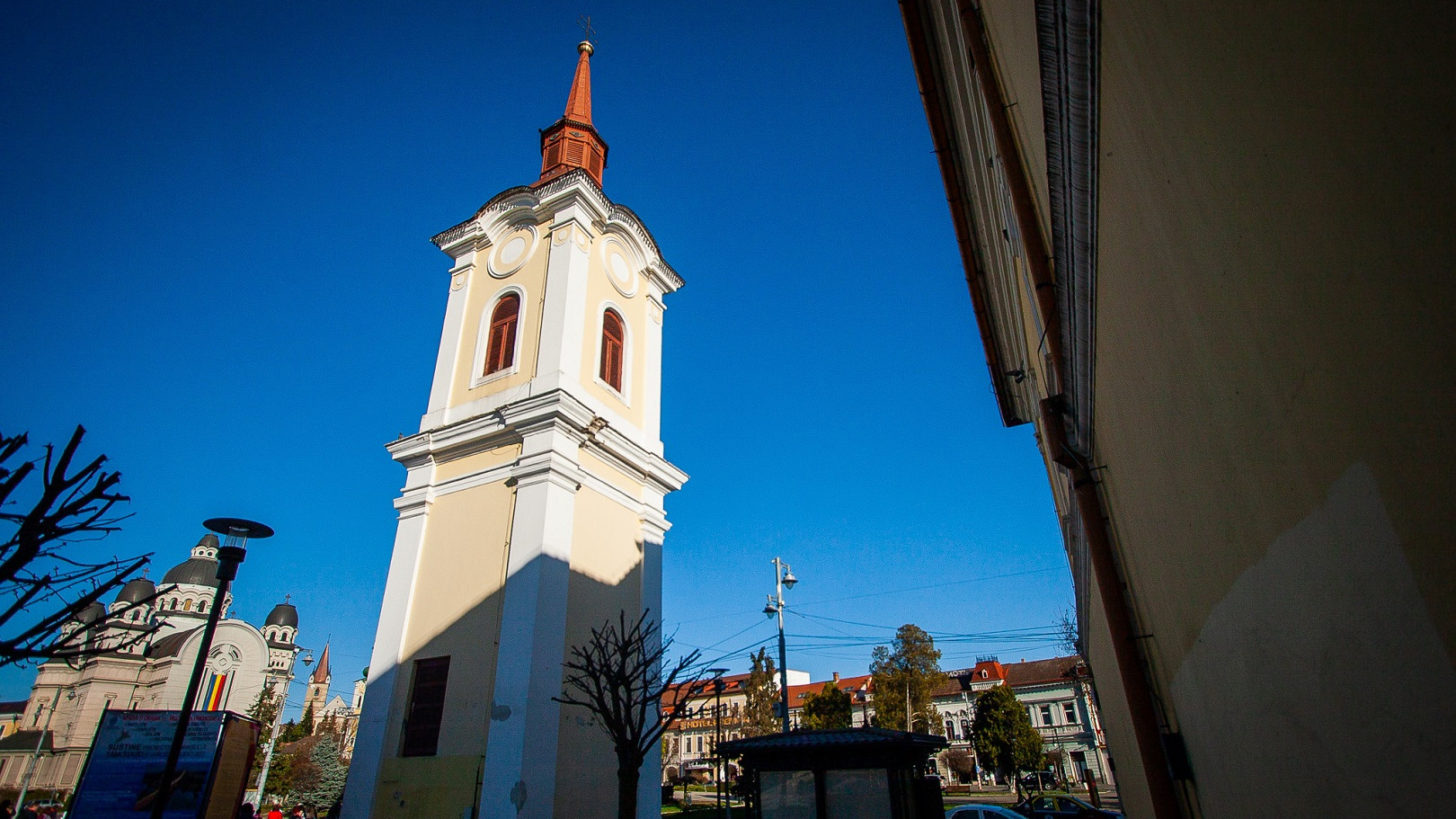
The Franciscan Bell Tower - Târgu Mureș
The Franciscan Tower in Târgu Mureş is an integral part of the 18th century Franciscan monastery built on the main square of the city. The simple, Baroque-style tower became a symbol of the destruction of Romanian socialism, just like the church of Bözödújfalu. In 1971, when the National Theater was built, the monastery was demolished with the church and the school in it. The church dignitaries have only been able to save the tower during long negotiations, given the fact that the entrance leading into the crypt of the monks starts from the tower. The tower is listed in the Romanian List of Monuments under number MS-II-m-A-15552.
Learn more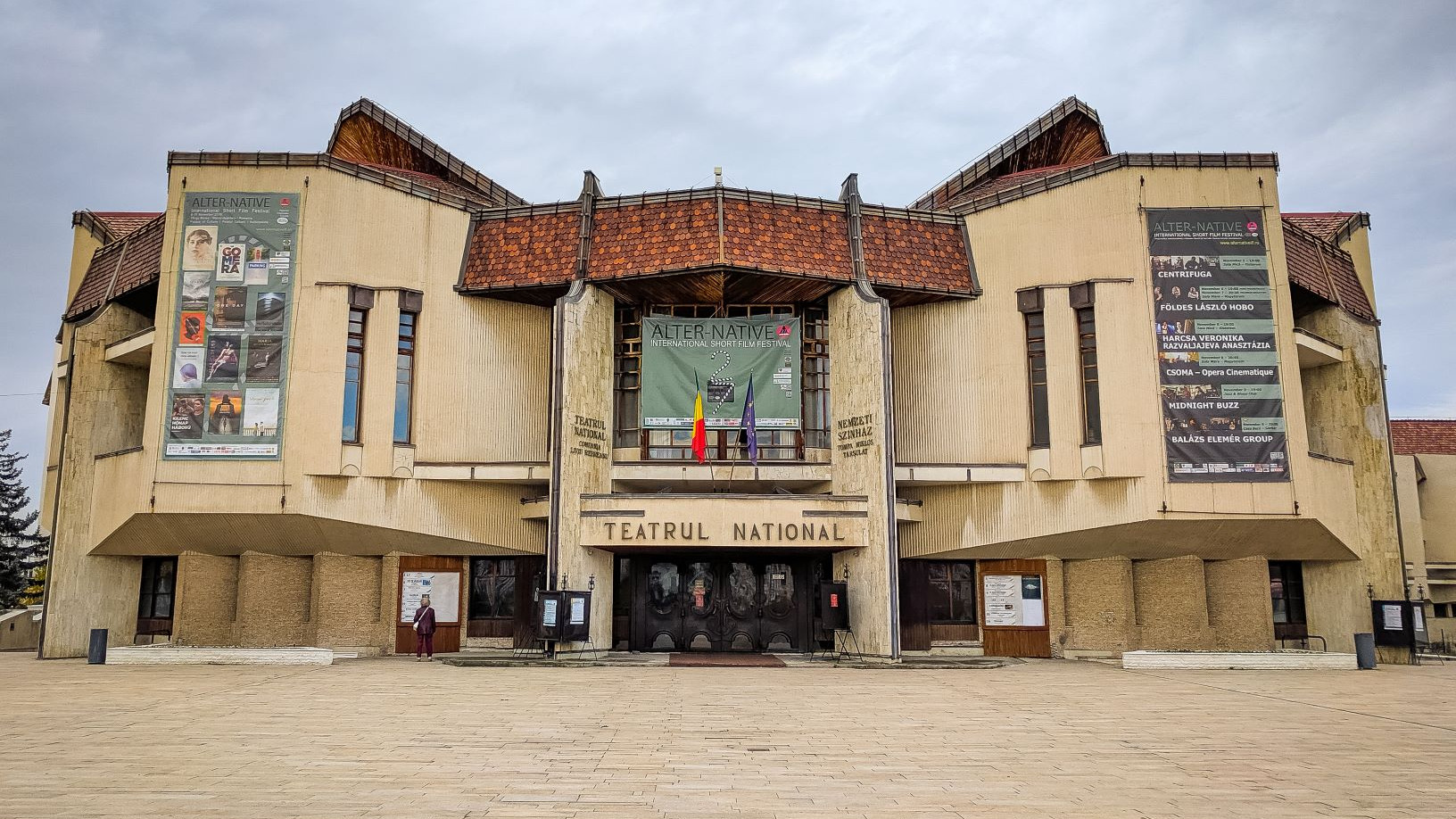
The National Theatre Târgu Mureș
The National Theatre in Târgu-Mureș has its roots in the Szekler Theatre, the first permanent theatre in town, founded in 1946 by director Tompa Miklós, whose plays were staged in the Palace of Culture. In 1962 the Romanian section was also established, and in 1965 it was decided to build a new theatre in Tg. Mureș. It was built between 1971 and 1973 in predominantly modernist style, with many angular shapes and excessive corners, for which the four architects who designed it were awarded with the Prize of the Union of Architects from Romania, in 1973. Today the Romanian and Hungarian sections of the National Theatre operate here.
Learn more
The Pálffy House - Târgu Mureș
Built in 1640 by Judge Tolnai János, the house was purchased by the Pálffy family in 1885. It is considered by specialists as the first building in the city where the Baroque style elements can be recognized. Although in urban legends it is known as “The Executioner’s House”, this theory has no historical grounds. Currently, it hosts the Faculty of Music within the University of Arts in Tg. Mureș.
Learn more
The Court House – Tabula Regia (The Kendeffy House) - Târgu Mureș
Tabula Regia represented the Supreme Court of Transylvania, which was relocated from the town of Mediaș to Tg. Mureș, in 1754. Tabula Regia functioned first in a building in the centre of the city and later, in 1826, it was moved to the palace built by the noble family Kendeffy in the beginning of the 19th century. Currently, the building houses the Court of Appeal. The Court of Law and the penitentiary were built where the palace gardens once were.
Learn more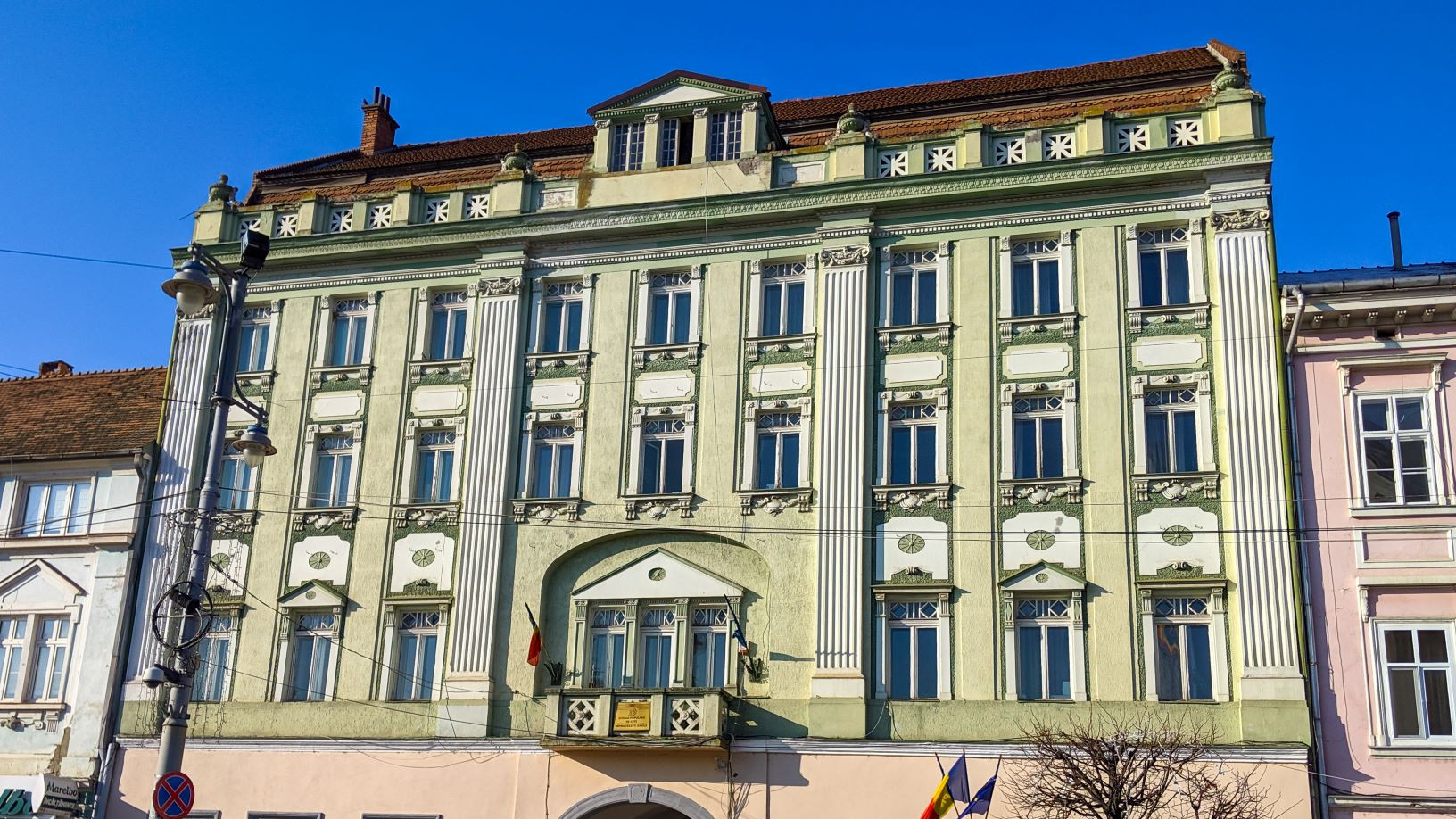
The Apollo Palace - Târgu Mureș
The Apollo Palace was built between 1820 – 1822, by Count Teleki Sámuel, with the purpose of renting out the rooms and using the money obtained to expand the book fund and to support the public library that he had opened in 1802. On the ground floor there were two shops and on the first floor there were rented rooms. On the second floor there was a ballroom, where debutantes’ balls were organized. The building was bought later by Albert Bürger, an important magnate, who had also opened the first brewery in town. Today the Folk Art School and other institutions can be found here.
Learn more